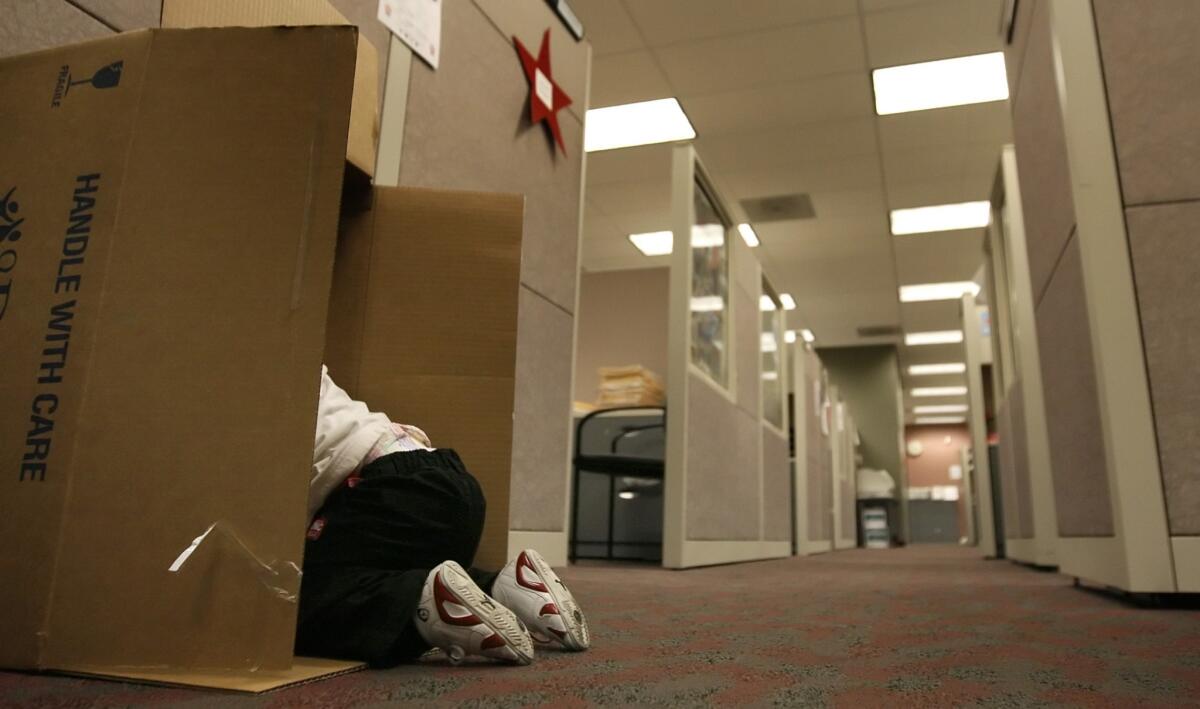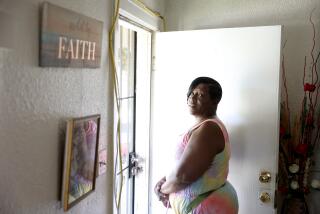Op-Ed: Good intentions are forcing foster kids into bad places

- Share via
The latest controversy roiling American foster care is all about children forced into inappropriate settings.
A Washington Post report on Dec. 30 noted that across the country “case workers and courts have been funneling children into crowded emergency shelters, hotels, out-of-state institutions and youth prisons — cold, isolating and often dangerous facilities not built to house innocent children for years.”
“With few available beds in therapeutic care in Washington State,” reads a recent op-ed in the New York Times, “foster youth, especially those of color, are frequently forced to stay in hotels.”
A Better Childhood has filed suit against 10 states in part because they assign children to “institutional facilities and group homes that ignore their needs, disabilities, and case history.” The nonprofit advocacy organization has documented placements outside the state that serves as the child’s guardian and situations where youngsters with no criminal record are housed in prison conditions.
Ironically, government policies meant to improve how and where kids are housed are behind these bad decisions. In an effort to prioritize family placements (foster and adoptive), jurisdictions have closed and reduced the funding for group homes. Less money means fewer “congregate care” facilities. Now when families can’t be found to take in children, or when a family setting simply won’t work, states, counties and municipalities are scrambling. And the situation is only getting worse.
Over the last 50 years, the child welfare establishment has come to a consensus: Growing up in an institution is not good for children; every child deserves a family. Orphanages have long been stigmatized and, for the most part, shuttered. Many deserved their bad reputations, but Dickensian assumptions aside, the data are mixed. UC Irvine emeritus economist Richard McKenzie, who grew up in a Presbyterian kids home in the 1950s, found in a survey of 2,500 orphanage alumni in the 1990s that 85% looked back “favorably” or “very favorably” on their experience.
“Only 2.3 percent of the alumni had hostile assessments,” McKenzie wrote in an essay in the Weekly Standard. “Moreover, the alumni reported that they had done better than the general population on almost all measures, including education, income, attitude toward life, criminal records, psychological problems, unemployment, dependence on welfare, and happiness.”
Nevertheless, the modern foster care system has been doing all it can to end congregate care except for juvenile offenders (detention centers, in other words) or for children who require treatment programs.
To meet the goal of family placements, states have mounted elaborate ad campaigns to recruit more parents. In some jurisdictions, nurses and counselors are offered specialized training and increased fees to take in children in need of medical or psychological care in order to keep them from congregate settings. This year, the Department of Health and Human Services embarked on a PR effort specifically to attract adoptive parents for teens in the foster system, a population for whom homes are often difficult to find. But even with outsized efforts, most child welfare programs can’t fill the need for foster families.
At the same time, some children, teens especially, don’t want to be fostered or adopted by a family. They may have experienced multiple placements and prefer a group setting to trying to fit once more into a family unit. Some have behavioral problems that torpedo adjusting to family life. According to a 2012 report from the Health and Human Services Child Welfare Information Gateway, “disruption rates”— meaning that a child is adopted and then “returned”— range from about 10% to 25% nationwide. For older kids, the numbers tend to be higher.
Despite the “family first” consensus, there is a need for group homes that aren’t hospitals or jails. Nonetheless, the incentives in terms of public relations and public dollars are all on the side of reducing congregate care. Marie Cohen, author of the blog Child Welfare Monitor, pointed out that disconnect in a 2019 report from the Annie E. Casey Foundation. The much publicized study, wrote Cohen, “praised those jurisdictions with lower group home percentages” while “chastising those with higher rates.”
“Nowhere,” noted Cohen, “did the authors mention the fact that eliminating too many congregate placements may lead to foster youth staying in offices, hotels, emergency placements, and abusive out-of-state facilities.”
In 2015, the California Legislature enacted the Continuum of Care Reform Act specifically to reduce reliance on group facilities and force the system to increase family placements. It didn’t eliminate all group homes, but it designated such settings primarily as a short-term solution for youngsters certified as having a medical or criminal problem that required a restrictive environment. The state estimated that it would quickly move 65% of its group home population to families. Instead it found it was only able to transfer 35%. With fewer group beds available, it had to assign many children to medical and detention facilities who didn’t require such settings.
Unfortunately, the Family First Prevention Services Act, which passed Congress in 2018 with bipartisan support, is modeled on California’s program. It is already leading states away from congregant care, limiting the kinds of facilities that can be funded by federal dollars and by adding regulatory burdens to group placements. For example, even group homes that aren’t specifically set up for medical treatment must have 24-7 clinical staff to qualify for federal funding.
We should do as much as possible to place foster kids in loving temporary or permanent family homes. But just reducing the options for this vulnerable population is not the answer.
Naomi Schaefer Riley is a visiting fellow at the American Enterprise Institute studying child welfare issues.
More to Read
A cure for the common opinion
Get thought-provoking perspectives with our weekly newsletter.
You may occasionally receive promotional content from the Los Angeles Times.










